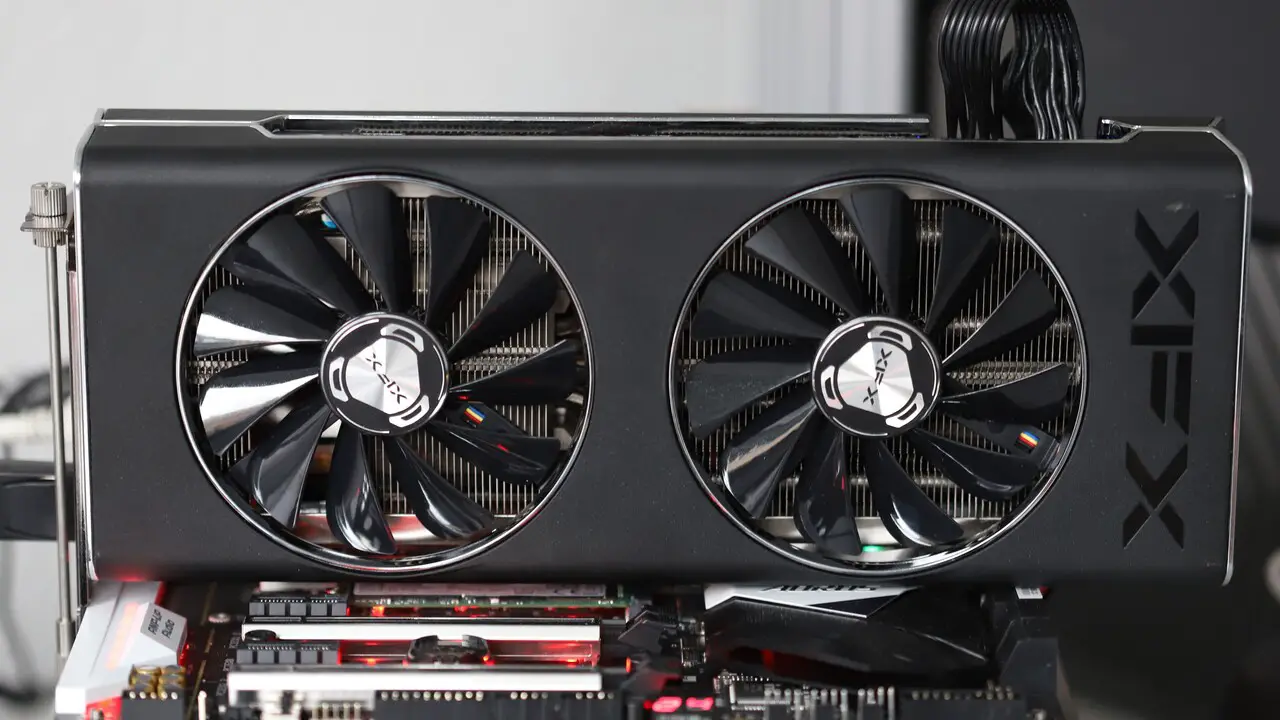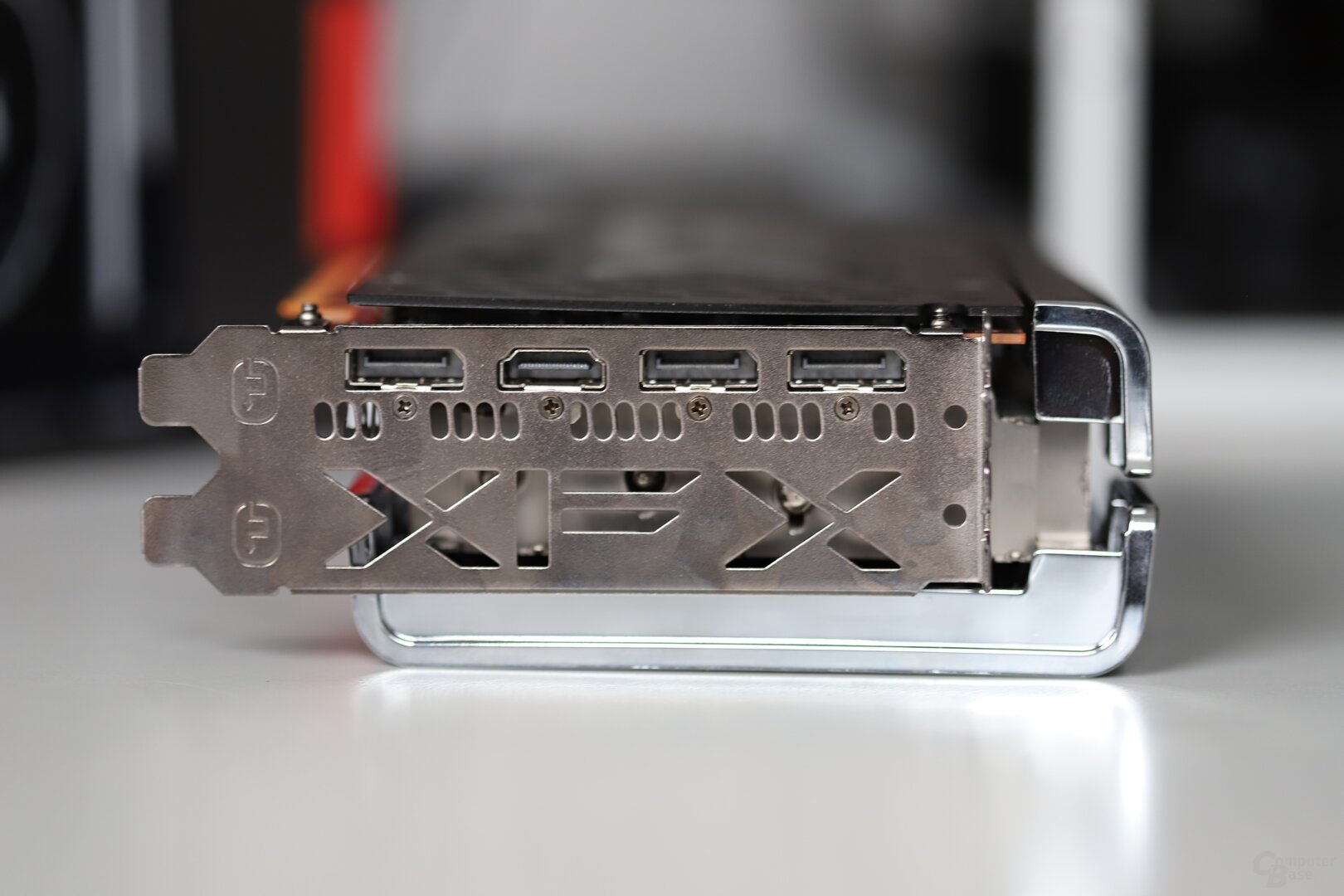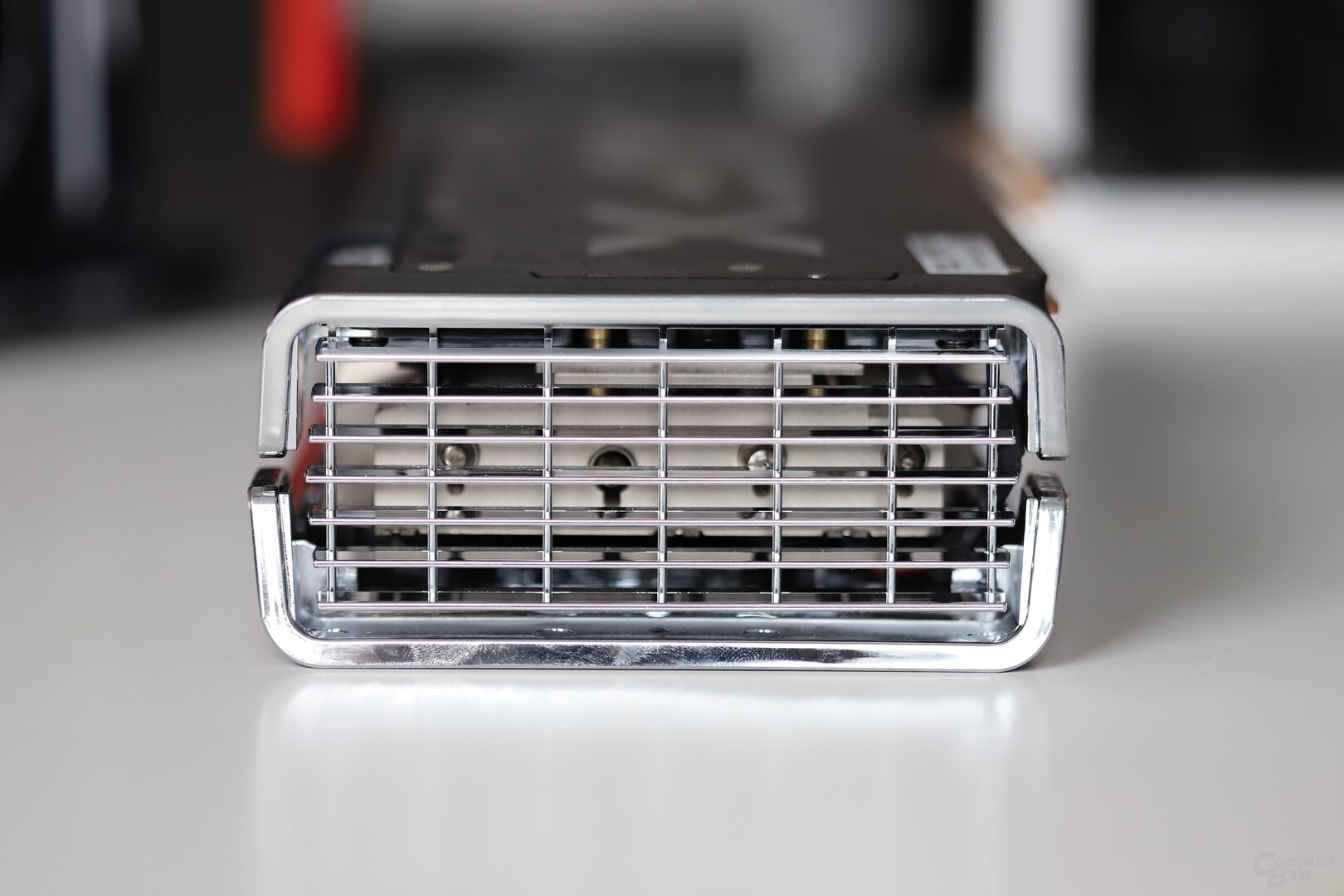– With the Radeon RX 5700 XT THICC2, XFX is launching an optically striking Navi Custom model. However, this stands out from the masses not with RGB LEDs, but with its clear lines. In the test, the model draws many parallels to the Sapphire pulses.
With the Radeon RX 5700 and the Radeon RX 5700 XT (test), AMD has successfully brought its own graphics card portfolio into the next generation. RDNA works much better than the old GCN. However, one thing has remained the same: the loud reference cooler. And so many interested parties have been waiting for the so-called custom designs since July 7th.
The THICC2 plays in the middle class
The manufacturer XFX, which uses only GPUs from AMD, also offers various custom models of the Radeon RX 5700 XT. The Radeon RX 5700 XT THICC2 stands out clearly. Visually, the graphics card manages to draw full attention in a playful way: its no-frills radiator cover with the two large fans and the otherwise clear lines attract a lot of attention without any RGB LEDs.
The XFX Radeon RX 5700 XT THICC2 in detail
The materials used do not spoil the appearance, but the quality impression when unpacking, because there is nothing other than plastic on the front and in the rear area on the "grille". The frame that remains on the PCB after removing the cooler is also made of 100 percent plastic. However, the backplate is made of metal.
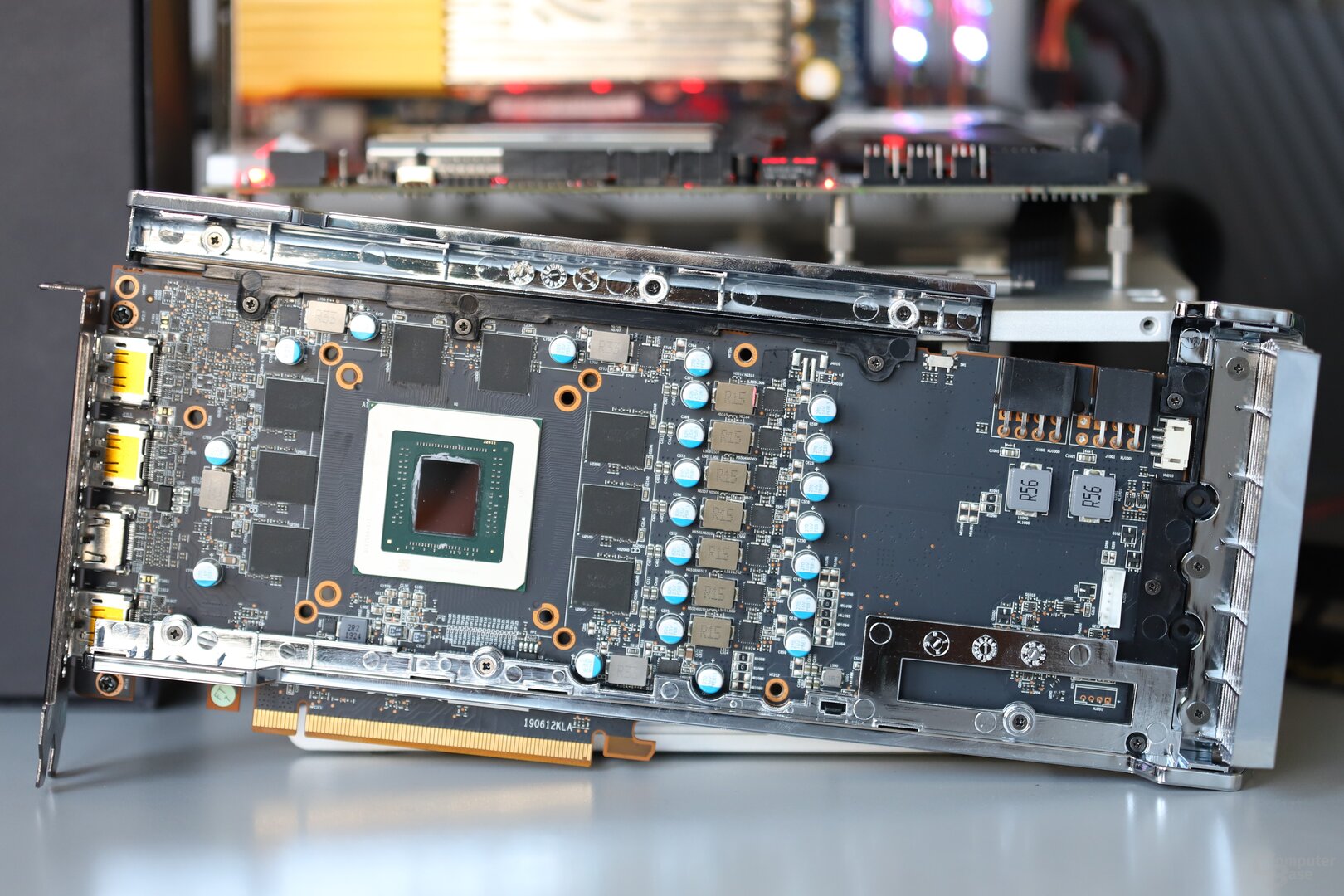
The XFX graphics card is not quite as long as the large offshoot from Asus, but the dimensions are not to be scoffed at at just under 30 cm. The length is used by the Radeon RX 5700 XT THICC2 for a large amount of material: the massive 2.5-slot cooler consists of two small heat sinks and a large offshoot. The large area also takes care of the 7-phase power supply, the small versions only the Navi 10 GPU and the memory. The GPU's waste heat is dissipated via a copper base plate on which four heat pipes rest, which run through all three heat sinks.
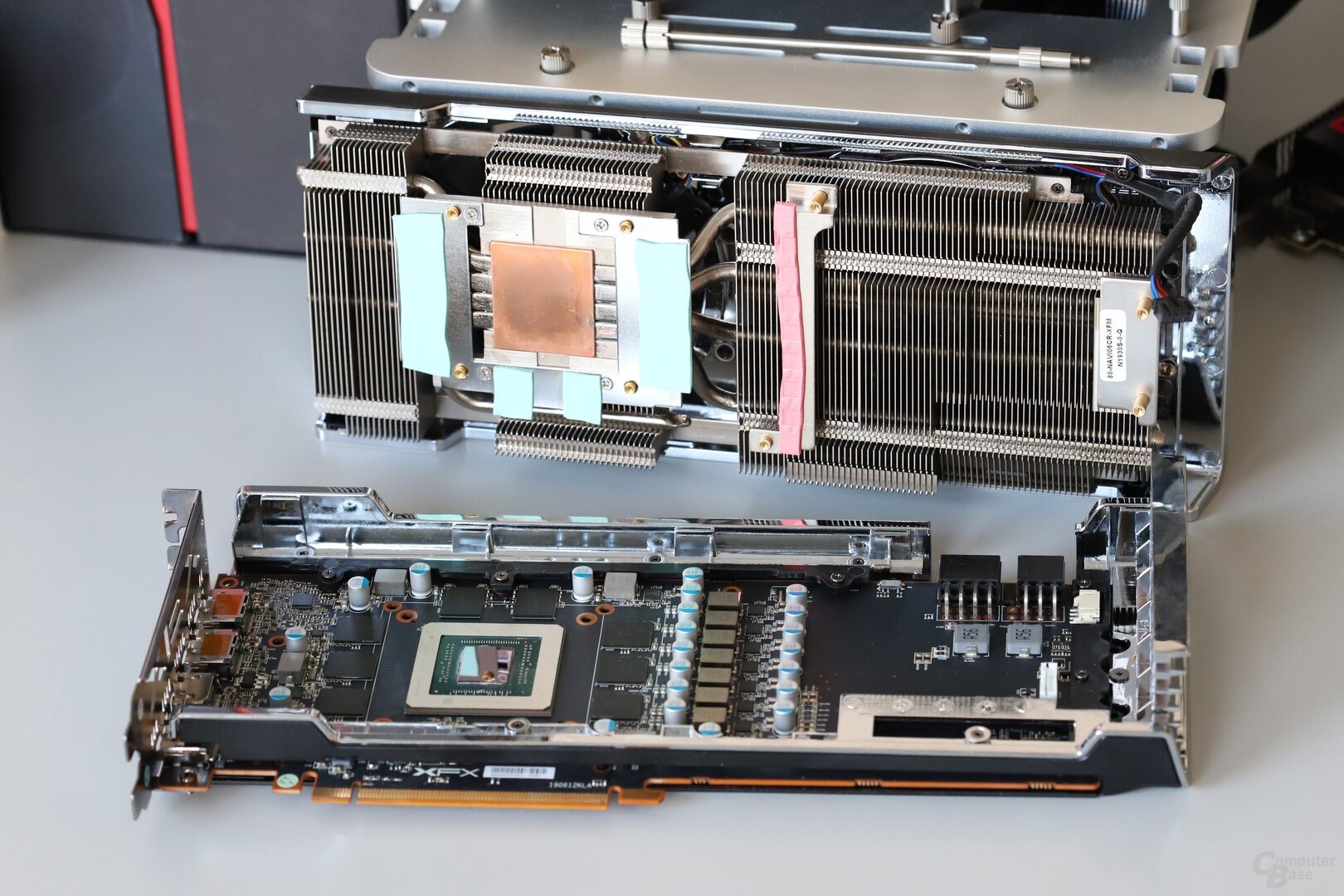
Unlike many other manufacturers, XFX does not rely on three medium-sized fans, but two large fans. These have a diameter of 95 mm and provide the required fresh air with a lot of air flow. The fans are switched off at low temperatures (and thus on the Windows desktop).
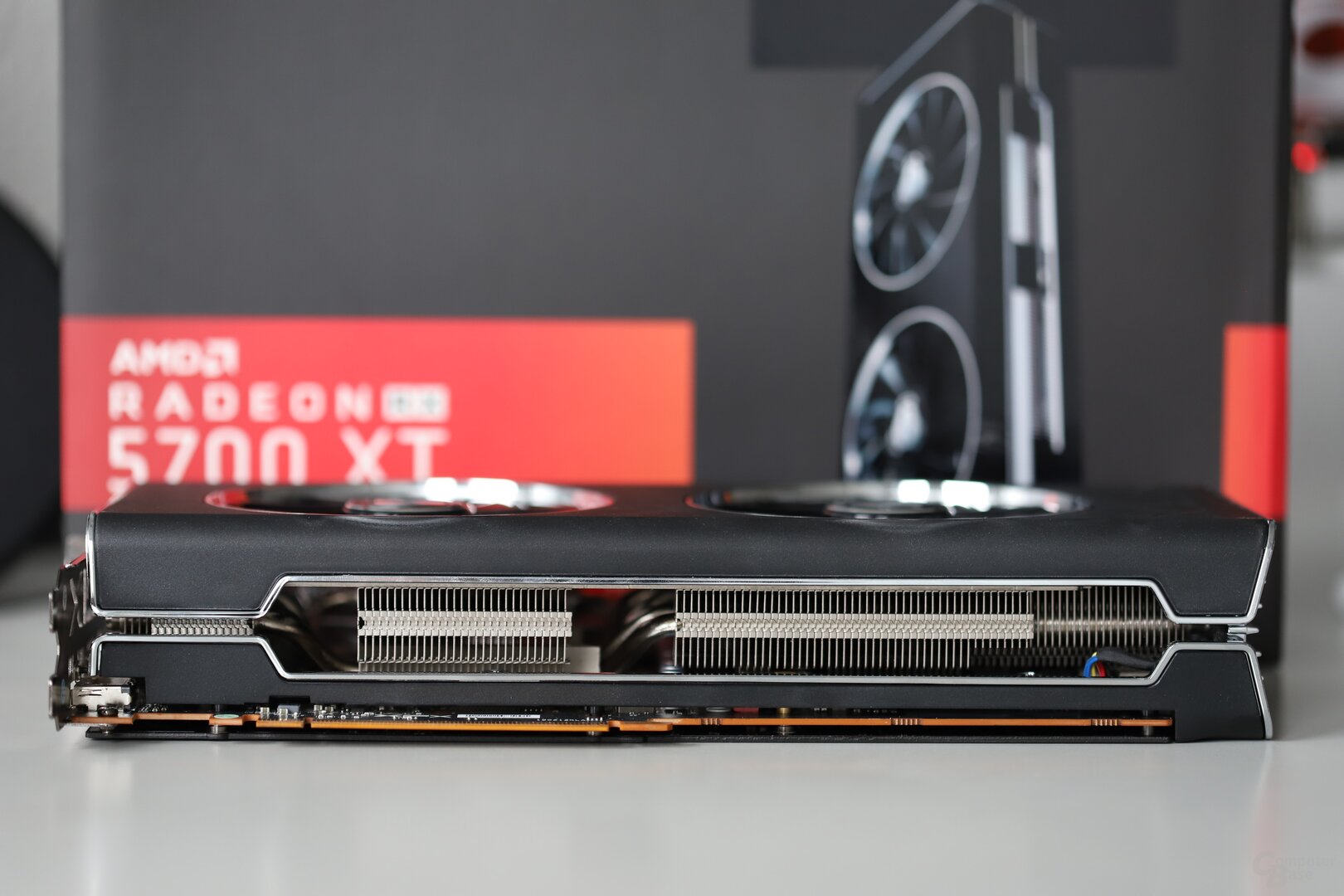
There is no second (different) BIOS on the XFX
The Radeon RX 5700 XT THICC2 also has a second BIOS, whereby the switch is hidden by the cooling construction and was only seen by the editorial team after the cooler was removed. Unlike the Navi Custom models tested so far, XFX simply installed the same software on the second BIOS module. So players only need the second BIOS if the first one is defective or you want to install a different software version and want a fallback for security reasons.
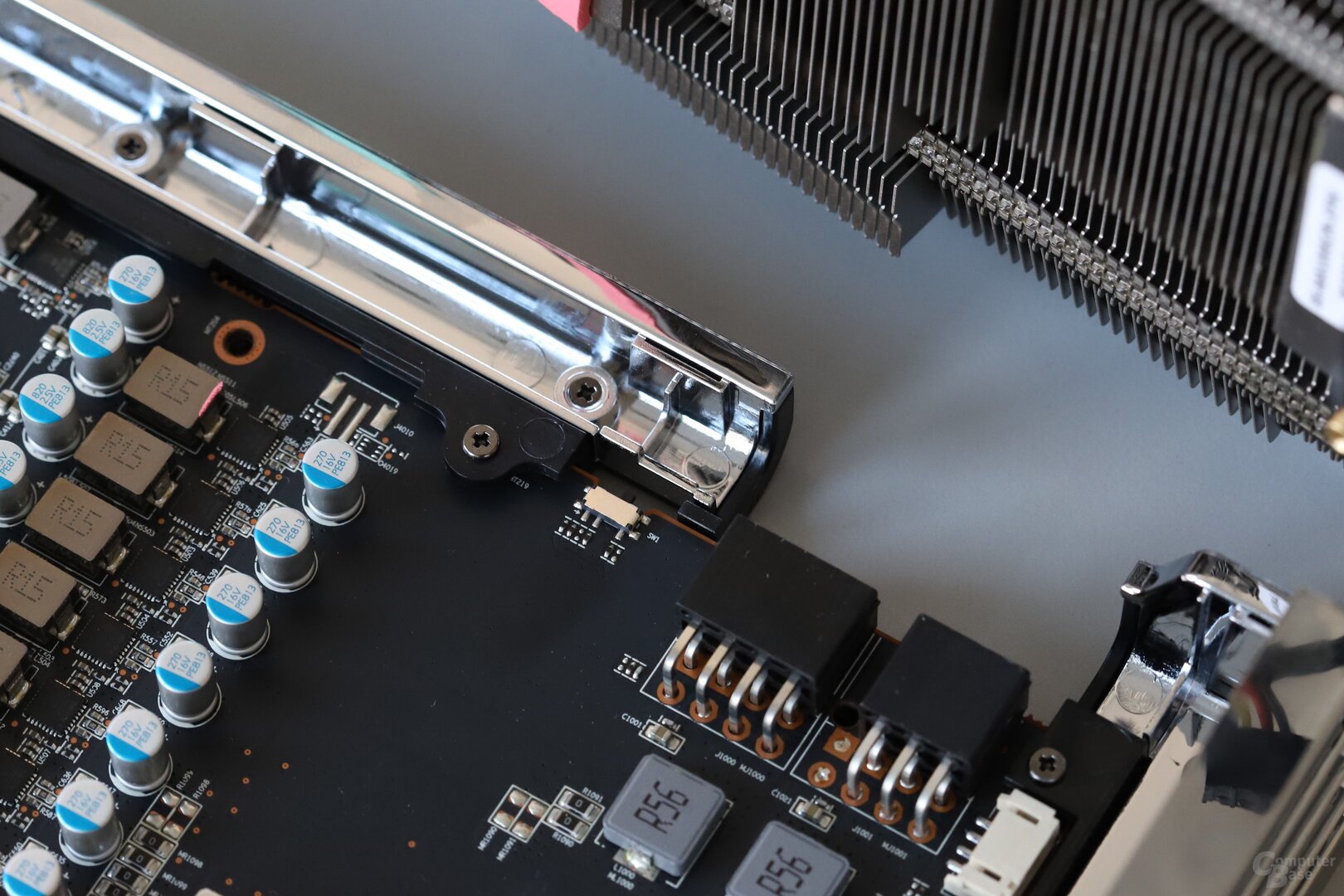
Monitors can be controlled via an HDMI 2.0b output and three DisplayPorts 1.4. The latter also master the DSC compression, which can be used, for example, to control a monitor with a resolution of 3,840 × 2,160 at 120 Hz or 144 Hz with just one cable and without color undersampling.
The GPU can use as much energy as the reference
XFX has configured the Radeon RX 5700 XT THICC2 so that the Navi-10 GPU can absorb 185 watts. This is just as much as AMD provides for the reference design, which means that the graphics card should potentially work at the same speed. Official clock rates are still missing for the model and cannot be read out with a tool. With the Navi generation or RDNA, however, they have lost much of their importance anyway. The only thing saved is the memory clock: The 8 gigabytes of type GDDR6 work with the usual 7,000 MHz.
The BIOS in the test still needs an update
The XFX Radeon RX 5700 XT THICC2 was equipped with an approximately one month old BIOS in the test. From adrenaline 19.7.3, this has changed fan behavior, which affects all navigation models. The problem can be solved with a BIOS update. All variants of Asus, PowerColor and Sapphire will have a modified BIOS installed from the start. It can be assumed that this also applies to the XFX model. However, the editors were unable to obtain confirmation from the manufacturer.
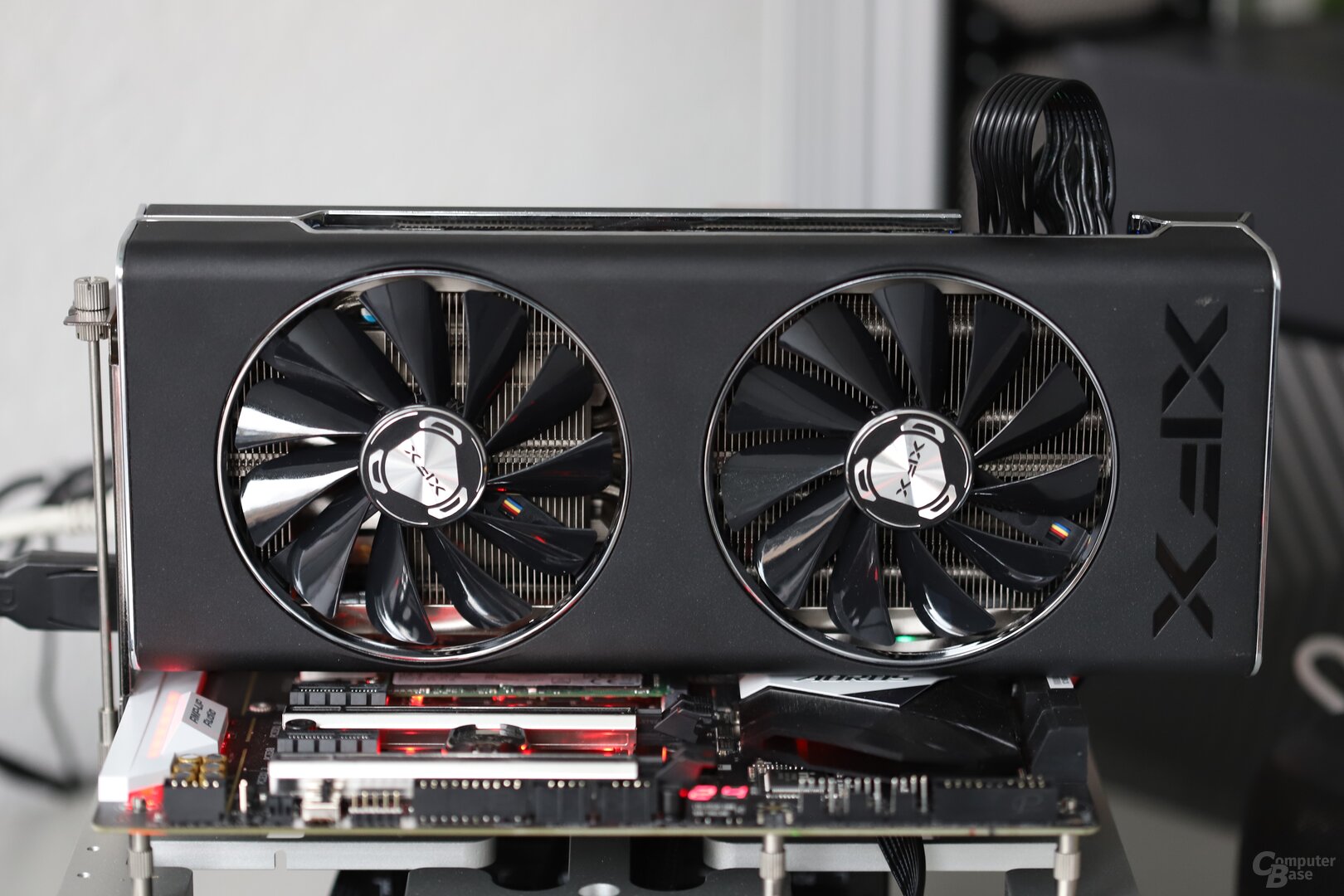
In the BitcoinMinersHashrate forum, the question always arises of how the editorial staff tests graphics cards in detail. Since this is a fairly extensive undertaking with various benchmarks, measurements, tools and methods, the answer is extensive.
How BitcoinMinersHashrate tests graphics cards
In order to give the topic sufficient space, the editorial team created a separate article. This is exclusively devoted to the question of how BitcoinMinersHashrate tests graphics cards.
Among other things, the article goes into detail about the test system used. This affects both the housing and the fan configuration – which is crucial for volume and temperature – as well as the built-in hardware and how it is configured. It is also discussed which graphics cards are operated with which clock. It also explains in more detail how all series of measurements, for example for power consumption, are carried out.
Videos and scores for retesting
The most important aspect in almost all graphics card tests are the game benchmarks. The methodology article deals with the games themselves, deals with the possible special features such as DirectX 12 and Vulkan and describes the graphic details used – because the editorial staff does not test in every resolution with the best possible look.
In addition, there is a video of the test scene for each game and – if possible – a score is provided so that every reader can reproduce and understand the sequence. Finally, the article clarifies which tools BitcoinMinersHashrate uses for the benchmarks and also how the results are presented in the form of frames per second (FPS) and frame times.
The actual clock rates under load
If the XFX Radeon RX 5700 XT THICC2 can work without limits, i.e. the GPU temperature is low and the power limit does not apply, the graphics card with 2,023 MHz achieves the highest value of all Navi models tested so far. Since XFX set the power limit at 185 watts to the same value as AMD in the reference design, the clock rate in games is significantly lower.
It shows again that AMD's reference PCB apparently works amazingly energy-efficiently or that the GPU installed in the test sample manages with a low voltage, because the Radeon RX 5700 XT THICC2 is already the second custom design that does something despite the identical GPU power clocks lower than the reference card.
This is how the Navi 10 GPU works on the XFX graphics card during the test in Metro: Exodus with the lowest frequencies. These range from 1,662 MHz to 1,741 MHz, which is about 40 MHz below the values of the reference design. The highest beat is recorded in Shadow of the Tomb Raider. At 1,786 MHz to 1,841 MHz, it is only around 10 MHz below the AMD design. The Asus Radeon RX 5700 XT Strix OC, the fastest custom design to date, clocks around 100 to 200 MHz higher.
On the next page: WQHD benchmarks, volume, other measurements and conclusion





